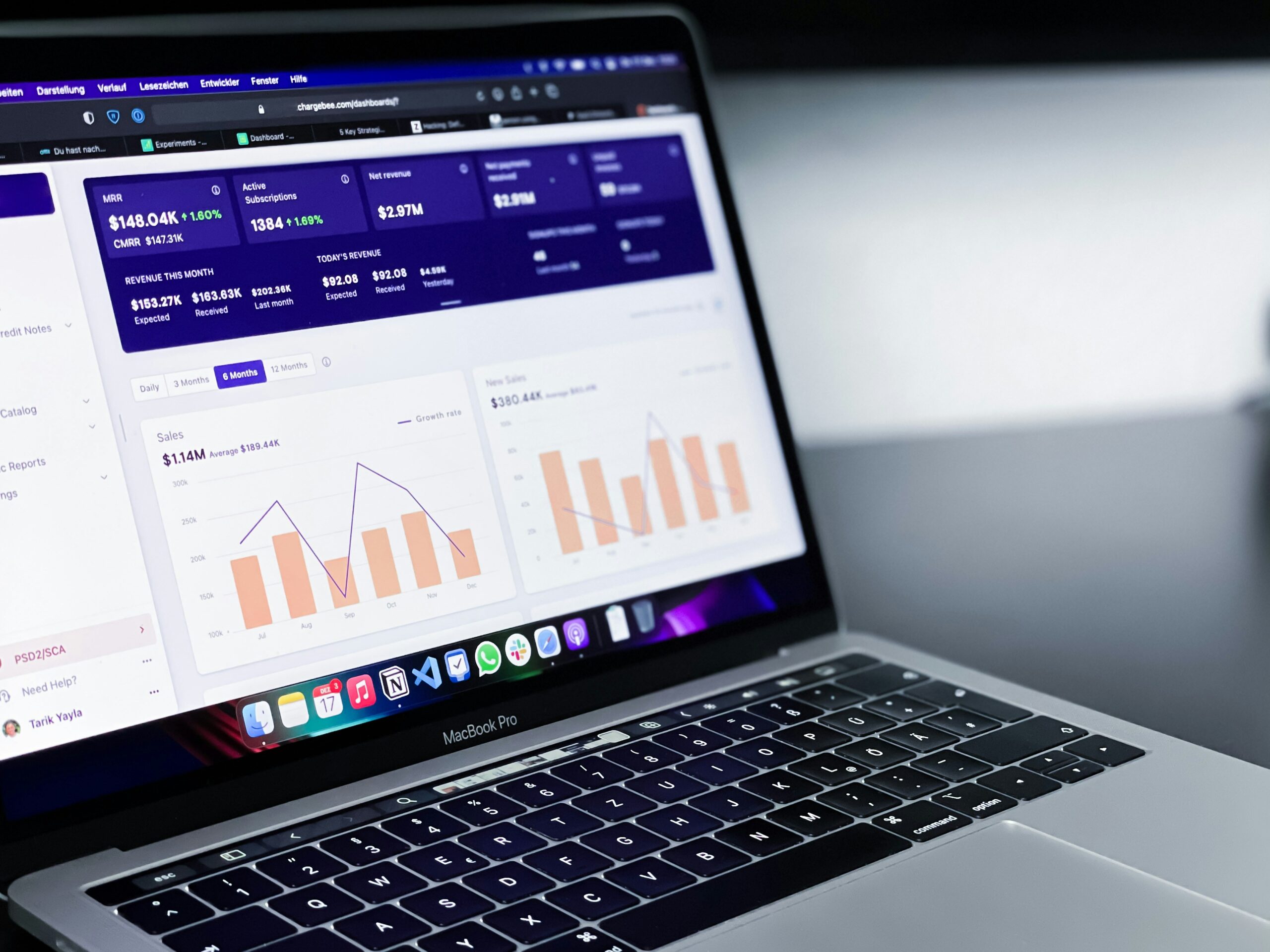In today’s fast-paced digital landscape, a well-optimized sales funnel isn’t just a marketing tool—it’s a growth engine. Each stage, from awareness to conversion, plays a vital role in turning curious visitors into loyal customers. By combining automation, lead nurturing, and data-driven insights, businesses can eliminate funnel friction and improve every touchpoint. Whether you’re refining lead generation or personalizing follow-ups, mastering the funnel means maximizing results with less waste—and that’s where smart tools like Nurture Machine make a measurable impact.
Key Takeaways
- The sales funnel comprises several critical stages from awareness to action, and optimizing each stage can boost conversion rates.
- Effective lead generation strategies, including SEO and social media marketing, directly affect funnel efficiency.
- Automation, email marketing, and CRM integrations are pivotal for nurturing leads and enhancing conversion.
- Continuous landing page optimization, A/B testing, and conversion rate optimization techniques are essential for maximizing profits.
- Advanced analytics and insightful reporting enable businesses to make data-driven decisions throughout the sales funnel.
What Are the Key Stages of a Sales Funnel and How Do They Impact Conversion Rates?

The sales funnel is a methodical framework that outlines the customer journey, from first encountering the brand to making a purchase. The key stages typically include Awareness, Interest, Decision, and Action, with each phase exerting a distinct influence on overall conversion rates. In the Awareness stage, potential customers first encounter the brand, usually through digital channels like social media or search engine results. During the Interest stage, users engage with content or promotional material, signaling their initial curiosity. In the Decision phase, customers evaluate the product or service, weighing its benefits against competitors, and finally, in the Action stage, they complete the purchase.
What Defines Each Sales Funnel Stage: Awareness, Interest, Decision, and Action?
Each sales funnel stage plays a specific role. Awareness is about generating visibility through content marketing, paid ads, and SEO. The goal is to capture attention and introduce the value proposition effectively. Businesses often use blog posts, videos, and infographics to boost visibility. In the Interest stage, prospects actively seek details about the product or service. Compelling email newsletters, informative landing pages, and engaging social content create deeper engagement. The Decision stage reinforces trust through product comparisons, testimonials, and targeted offers. The Action stage marks the final conversion event, such as a sign-up or purchase.
How Does Conversion Rate Vary Across Different Funnel Stages?
Conversion rates tend to drop at each stage due to natural engagement filters. A strong awareness campaign might convert impressions into clicks, but fewer users proceed to take action. Small conversion improvements at later stages can significantly boost total revenue. Tracking how prospects behave helps identify where they exit the process. This allows for targeted follow-up tactics like retargeting ads or personalized content. A/B testing helps uncover which elements drive more users to continue. Tracking bounce rate, click-through rate, and session time also highlights weak areas. These insights help marketers reduce drop-off and increase funnel performance.
Why Is Understanding Customer Journey Critical for Funnel Optimization?
Understanding the customer journey reveals the key decision-making moments. This insight helps marketers deploy targeted communication and allocate budget efficiently. If a drop-off occurs during the evaluation phase, adding more proof or clarity can help. Personalization also becomes more effective when journey data is analyzed. Tailored messages that speak to individual pain points enhance conversion potential. These insights help craft strategic interventions at each funnel stage. External factors like seasonal changes or new competitors can also influence the journey. Mapping the full path makes every prospect interaction more meaningful.
How Can Lead Generation Strategies Drive More Qualified Prospects Into Your Sales Funnel?

Qualified leads are those that exhibit a clear interest in solving a specific problem or fulfilling a particular need. These high-intent prospects require minimal nurturing compared to cold leads and are more likely to convert as they naturally align with the business model. Advanced customer segmentation and persona-based outreach further refine the lead generation process. Utilizing digital marketing channels like social media platforms, SEO-optimized landing pages, and targeted email campaigns collectively help in reducing the gap between initial interest and a qualified lead.
What Are the Most Effective Lead Generation Techniques for Maximum Conversion?
Top-performing techniques deliver value while capturing attention. Content like ebooks and toolkits educates while collecting prospect info. Interactive content, such as quizzes and calculators, boosts engagement and shares personalized insights. Optimized landing pages with short, relevant forms increase sign-up rates. Limited-time offers and free trials also create urgency that drives conversions. Partnering with others to co-promote content adds reach and credibility. Social media contests and targeted ads drive interest in specific segments. Once captured, leads should enter automated workflows to continue the journey. Every touchpoint should be designed to qualify leads and move them closer to a decision.
How Does SEO Enhance Lead Generation for Sales Funnel Success?
SEO increases visibility among prospects actively searching for solutions. Ranking high for relevant terms drives consistent organic traffic over time. These leads often have higher intent, since they’re self-motivated to find answers. Technical SEO ensures landing pages load quickly and present clear value. On-page elements like structure, keywords, and internal links support long-term rankings. UX improvements like mobile design and content clarity build trust. Off-page SEO, such as quality backlinks, strengthens domain authority and credibility. Together, these efforts make the website a reliable entry point for qualified leads. With consistent SEO, businesses fill their funnel with high-converting prospects.
Which Lead Magnets Convert Best and Why?
Lead magnets that offer immediate and useful insights convert the highest. Popular examples include checklists, templates, and personalized tools. These resources solve specific problems or answer common questions upfront. Interactive formats—like calculators or assessments—generate engagement while qualifying users. Success comes from aligning the offer with the prospect’s current pain point. Clear CTAs and well-placed forms support conversion. Once engaged, leads are easier to nurture since they’ve already received value. A strong lead magnet can act as a trust-building tool as well. Consistent testing helps identify which format and topic resonate best with the audience.
How Can Social Media Be Leveraged for Targeted Lead Generation?
Social media offers highly segmented targeting based on user behavior and interests. Paid campaigns can focus on specific audiences ready to engage with the brand. Organic content—like tips, visuals, and live sessions—builds trust and sparks interest. Participating in communities allows businesses to answer questions and build authority. Video demonstrations, behind-the-scenes posts, and stories help humanize the brand. Retargeting ads can follow engaged users to bring them back to a landing page. Contests and giveaways create excitement while collecting new contact details. Monitoring platform analytics helps refine audience targeting over time. These combined efforts feed the funnel with warm, engaged leads.
What Lead Nurturing Strategies Improve Engagement and Increase Funnel Conversion Rates?

Lead nurturing is a critical element in the sales funnel that involves building trusted relationships with prospects through focused, continuous interactions. Employing strategic lead nurturing techniques ensures that potential customers remain engaged throughout their decision-making process, ultimately driving higher conversion rates. These strategies include email marketing, personalized content delivery, and marketing automation workflows that keep prospects informed and excited about the brand. Effective lead nurturing not only bridges the gap between initial interest and final action but also works to preempt any friction points that might cause a potential customer to drop out of the funnel.
How Does Email Marketing Automation Support Effective Lead Nurturing?
Email automation delivers tailored content to leads based on their behaviors and funnel stage. It allows businesses to send timely follow-ups triggered by actions like downloads or page visits. These automated sequences nurture curiosity into commitment with educational and persuasive content. Behavioral segmentation ensures each message is personalized and relevant. Metrics like open and click-through rates help refine messaging strategies. This automation supports consistent engagement without overburdening the sales team. Drip emails can introduce new benefits, answer objections, or offer limited-time deals. All these actions help move leads toward final conversion efficiently and naturally.
What Are Drip Campaigns and How Do They Boost Lead Conversion?
Drip campaigns are structured email sequences sent over time to nurture leads. Each email is crafted to address specific needs or objections at different stages. This approach builds trust while offering progressive value and information. For example, a sequence might begin with tips, then offer a product overview, followed by a time-sensitive offer. These campaigns maintain contact without overwhelming prospects. They help establish authority, clarify solutions, and create momentum toward purchase. Timing and messaging are based on lead behavior, ensuring relevance. The result is a more engaged audience and higher conversion rates across the funnel.
How Is Lead Scoring Used to Prioritize High-Potential Prospects?
Lead scoring ranks prospects based on how closely they align with conversion signals. Criteria may include website visits, form submissions, or content interaction. High scores indicate strong interest and readiness to move forward. Marketing and sales teams can focus on these leads for quicker results. It streamlines workflows and ensures resources target those most likely to convert. Scores can be adjusted over time to reflect updated insights or new priorities. This method supports more efficient follow-ups and faster deal cycles. By prioritizing high-score leads, teams increase productivity and maximize funnel performance.
How Do Landing Page Optimization and A/B Testing Maximize Sales Funnel Conversions?

Landing pages are where curiosity turns into action, so they must be optimized. This includes everything from the headline and images to CTAs and form length. A/B testing identifies which versions drive more engagement and fewer exits. Testing one element at a time—like color or layout—pinpoints what works best. Over time, data reveals trends that guide smarter design decisions. Pages should load fast, work across devices, and clearly explain value. These changes improve visitor experience and reduce friction. When landing pages convert well, every dollar spent on lead generation works harder.
What Are the Best Practices for Designing High-Converting Landing Pages?
High-performing landing pages keep things simple and focused. A clear headline immediately communicates the offer’s value. Clean layouts direct attention toward the CTA without distractions. Trust signals—like testimonials or security badges—reinforce credibility. Forms should be short and ask only for necessary details. Visuals support the message without overwhelming the user. Mobile optimization ensures usability across screens and boosts reach. Pages should align closely with the ads or content that drive traffic. Together, these best practices ensure a smooth path to conversion and maximize funnel ROI.
How Does A/B Testing Identify and Fix Funnel Bottlenecks?
A/B testing compares two versions of a funnel element to find which performs better. By isolating a variable—like button text or layout—marketers can see what improves results. This process helps detect weak points where users drop off or lose interest. For example, a high-exit rate may signal confusing copy or unclear next steps. Insights from testing guide targeted updates that reduce friction. Ongoing tests ensure that improvements are based on real user behavior. Small tweaks can lead to major gains when backed by data. Regular testing makes the funnel more responsive and effective over time.
What User Experience (UX) Elements Influence Conversion Rates Most?
A smooth, intuitive UX encourages users to stay, engage, and convert. Easy navigation helps visitors quickly find what they need without confusion. Clear visual hierarchy ensures that important messages stand out. Responsive design makes the site usable across all devices, reducing bounce rates. Form simplicity improves completion rates by minimizing effort. Engaging visuals and clean layouts build trust and keep attention focused. Consistent branding reassures users and enhances recognition. Fast load speeds prevent drop-offs due to frustration. All of these elements work together to support conversion across the entire funnel.
How Can Sales Process Automation and CRM Integration Streamline Funnel Management?

Sales automation and CRM systems help simplify and organize every step of the funnel. Automation handles repetitive tasks like follow-ups and lead scoring, freeing up team bandwidth. CRM platforms centralize customer data, giving a complete view of each prospect’s activity. With synced systems, communication becomes timely and personalized. This seamless coordination reduces errors and speeds up responses. Lead status, deal progress, and engagement history are all easily accessible. It also improves collaboration between marketing and sales teams. The result is a more agile, efficient, and effective funnel experience.
What Are the Benefits of Integrating CRM With Sales Funnel Workflows?
CRM integration enhances funnel workflows by aligning communication, tracking, and reporting. It centralizes lead data for better visibility and organization. Tasks such as follow-ups or lead assignment can be automated to save time. It ensures that prospects receive the right message based on their funnel stage. Performance metrics are easier to track and adjust in real time. Teams gain clarity on which actions are driving results. Custom segmentation allows for tailored outreach strategies. This leads to improved conversion rates and stronger customer relationships.
How Do Sales Automation Workflows Improve Efficiency and Conversion?
Sales automation reduces time spent on manual processes by triggering actions based on user behavior. For example, when a lead downloads a resource, an email sequence can begin instantly. These workflows maintain consistent engagement and ensure timely responses. Sales teams can focus on high-impact interactions instead of routine tasks. Automation keeps prospects moving through the funnel with minimal friction. It also enables real-time tracking of actions and responses. Streamlined processes lead to shorter sales cycles and fewer missed opportunities. Efficiency gains from automation often directly increase conversion rates.
What Metrics Should Be Tracked to Measure Funnel Automation Success?
Key metrics include stage-by-stage conversion rates, lead velocity, and time-to-close. Tracking email engagement—like open and click-through rates—shows how well automation nurtures leads. Monitoring how long leads spend in each stage helps identify delays. Customer acquisition cost and return on investment reveal funnel efficiency. Lead scoring accuracy should also be evaluated to ensure proper prioritization. CRM data helps monitor touchpoint frequency and engagement quality. Comparing historical performance reveals long-term gains. These metrics guide decisions that optimize and scale automation efforts.
What Conversion Rate Optimization (CRO) Techniques Deliver Maximum Profits in Sales Funnels?

Conversion rate optimization (CRO) techniques focus on identifying and eliminating friction within the sales funnel in order to increase the rate at which potential customers take desired actions. These techniques are not only about improving the landing page design but also involve deploying data-driven insights to fine-tune every interaction. From personalization tactics to the use of behavioral triggers and A/B testing, CRO methodologies aim to maximize every stage of the funnel—from awareness to action—by increasing engagement and minimizing obstacles. Effective CRO is directly linked to higher profits as even small improvements in conversion percentages can lead to substantial revenue growth.
How Do Data-Driven Insights Inform CRO Decisions?
Data insights reveal how users interact with different funnel elements. Metrics like bounce rate and exit pages show where attention is lost. Heatmaps highlight which parts of a page attract the most or least clicks. A/B test results pinpoint what improves engagement and conversion. These insights eliminate guesswork and support continuous improvements. Session recordings uncover user pain points and navigation issues. Trends over time inform long-term optimization strategies. Every tweak made using data has a measurable impact. The goal is to make each touchpoint smoother and more persuasive.
What Role Does Personalization Play in Increasing Conversion Rates?
Personalization boosts conversions by showing users content that reflects their interests. Customizing emails, landing pages, or CTAs based on behavior creates relevance. Prospects feel understood when messaging aligns with their goals or concerns. Tailored offers improve response rates and foster trust. Behavior-triggered workflows ensure timely and specific communication. Personalization shortens the journey by reducing confusion or indecision. Dynamic content adapts to user preferences, making the experience more intuitive. These strategies increase engagement and guide users toward action more effectively.
How Can Continuous Testing and Optimization Sustain Funnel Performance?
Ongoing testing helps adjust for shifting behaviors and preferences. A/B and multivariate testing reveal what drives better results at each stage. Frequent updates ensure that design and messaging stay relevant. Testing headlines, form length, visuals, and CTA wording sharpens performance. It also helps uncover hidden bottlenecks that hinder conversions. Consistent analysis of test outcomes improves long-term strategies. Over time, even minor changes compound into major improvements. This cycle of testing and refining keeps funnel performance high.
Frequently Asked Questions
What are the main benefits of optimizing each stage of the sales funnel?
Optimizing each stage of the sales funnel ensures that potential customers are effectively nurtured from awareness through decision-making to final purchase, reducing drop-off at critical points. This process increases overall conversion rates, improves ROI, and enhances customer satisfaction by providing a seamless and personalized journey that addresses specific pain points.
How does marketing automation improve lead nurturing?
Marketing automation improves lead nurturing by delivering personalized, timely content based on customer behaviors and engagement patterns. Automated drip campaigns and follow-up sequences maintain a consistent flow of relevant information, reducing manual intervention, shortening the sales cycle, and helping convert leads into paying customers through continuous, tailored interaction.
What role does SEO play in lead generation for sales funnels?
SEO plays a crucial role in lead generation by increasing the organic visibility of targeted content. Optimizing for search keywords that are relevant to the target audience attracts high-quality traffic, which often translates to more qualified leads. Enhanced search engine rankings also improve trustworthiness, which encourages users to explore the brand further and enter the funnel.
How can A/B testing help identify and fix funnel bottlenecks?
A/B testing helps identify funnel bottlenecks by creating controlled comparisons between different design elements, headlines, or CTAs to determine which variant performs better. The insights from these tests allow marketers to remove friction points, improve user experience, and systematically optimize each conversion step, resulting in higher efficiency and increased sales.
Why is CRM integration important for sales funnel management?
CRM integration is important because it centralizes customer data, ensuring that all sales and marketing activities are coordinated. This integration provides real-time insights into lead behavior, enables targeted automation, and improves collaboration between teams. As a result, businesses can personalize interactions, reduce time-to-conversion, and enhance overall funnel performance.
Conclusion
In summary, effective sales funnel conversion strategies hinge upon a deep understanding of each stage of the funnel—from awareness to action—and the implementation of targeted marketing techniques. By integrating advanced lead generation, effective CRM systems, and continuous optimization practices such as A/B testing and personalized messaging, businesses can significantly improve conversion rates. Embracing data-driven insights and automation not only streamlines the customer journey but also reduces acquisition costs and drives sustainable revenue growth. As companies refine their processes and leverage cutting-edge digital marketing strategies, they ensure that every customer interaction contributes to a robust and profitable sales funnel.






